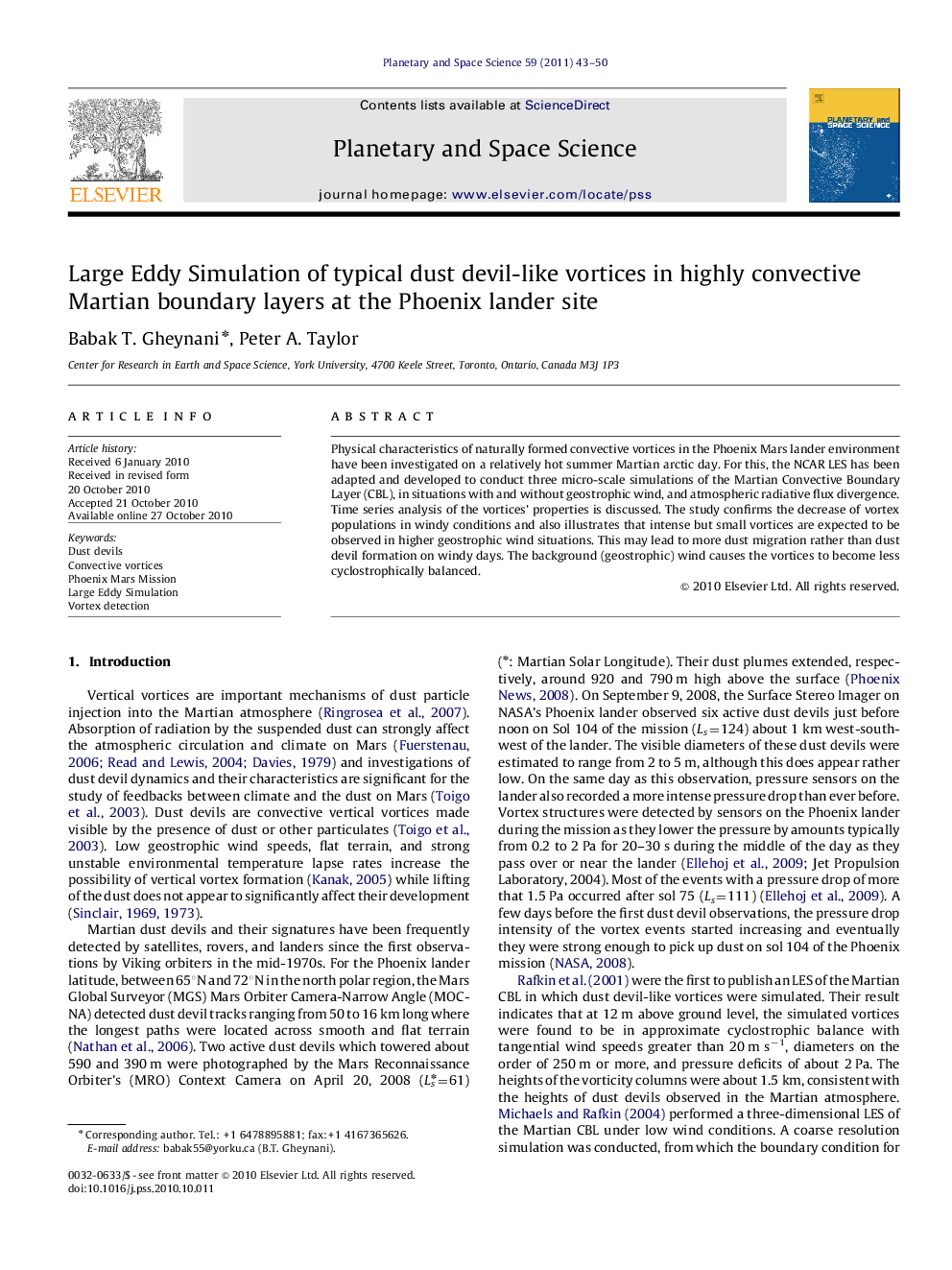| Article ID | Journal | Published Year | Pages | File Type |
|---|---|---|---|---|
| 1781561 | Planetary and Space Science | 2011 | 8 Pages |
Physical characteristics of naturally formed convective vortices in the Phoenix Mars lander environment have been investigated on a relatively hot summer Martian arctic day. For this, the NCAR LES has been adapted and developed to conduct three micro-scale simulations of the Martian Convective Boundary Layer (CBL), in situations with and without geostrophic wind, and atmospheric radiative flux divergence. Time series analysis of the vortices’ properties is discussed. The study confirms the decrease of vortex populations in windy conditions and also illustrates that intense but small vortices are expected to be observed in higher geostrophic wind situations. This may lead to more dust migration rather than dust devil formation on windy days. The background (geostrophic) wind causes the vortices to become less cyclostrophically balanced.
